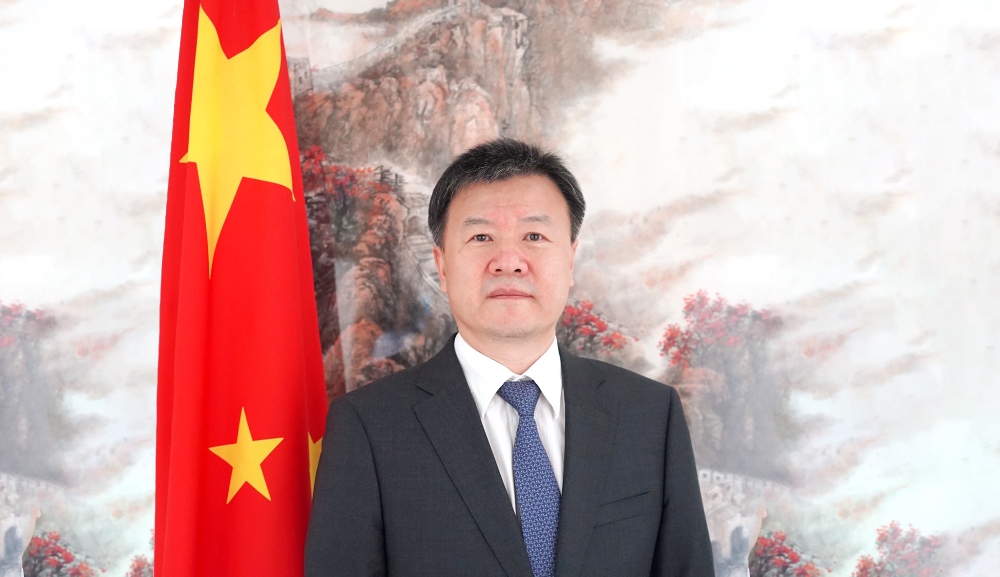The Chinese economy continued to grow in the first quarter of 2021, with GDP reaching RMB 24931 billion, up 18.3% year on year and 0.6% higher than the fourth quarter of 2020, according to National Bureau of Statistics of the PRC. China, the world’s second largest economy, has obviously managed to safeguard the lives and health of its people, and consolidate and expand its achievements in socio-economic development at the same time. Along with a series of law and science-based and orderly measures in pandemic response, the domestic economy has maintained a sound momentum of steady growth. The good start has make China a ballast stone for global economic recovery.
There were a number of highlights in the first quarter. First, market confidence and expectations improved significantly. The Purchasing Managers’ Index for March was 51.9%, up 1.3% from the previous month, while the Non-Manufacturing Business Activity Index was 56.3%, up 4.9%. Second, the market became more active and dynamic. There were 2.792 million new market entities nationwide handling tax-related matters, up 86%. Third, investment and consumption recovered steadily. Fixed asset investment rose 25.6% while retail sales of consumer goods rose 33.9%. Fourth, foreign trade and foreign investment increased significantly. The volume of exports and imports of goods denominated in RMB increased by 38.7% and 19.3% respectively. Foreign investment actually used rose by 39.9% as calculated in RMB. Fifth, industrial production grew rapidly. Added value of industrial enterprises above the designated size rose 24.5%, industrial power consumption and rail freight rose 23.9% and 13.9% respectively, and industrial capacity utilization rate was the highest Q1 level since 2013. Sixth, new growth drivers gained a sound momentum. The added value of high-tech manufacturing increased 31.2%. Seventh, the people’s living standard improved steadily. Per capita disposable income rose by 13.7% in real terms, 80.9% of the days were with good air quality nationwide, and the average concentration of fine particulate matter in cities at and above the prefecture level fell by 2.2%.
At present, the Chinese economy is still in recovery and development. We will steadily advance our priorities and maintain a strong growth momentum. First, we will continue loosening restrictions and reducing burdens for market entities, increase support for them with more equitable and inclusive policies, advance support for business startups and innovation, implement detailed and specific tax and fee reductions for small and micro enterprises, and put new structural tax reduction measures in place. Second, we will improve business environment and promote fair competition. The reforms to streamline administration, delegate powers and improve regulation and services must be advanced by reducing the procedures, documents and expenses required in the review and approval of enterprise-related matters, innovating and strengthening interim and ex-post oversight, carrying out business environment evaluation in some localities, drawing up action plans for building a high-standard market system, publishing anti-monopoly guidelines in the field of platform economy and seeking positive progress in the reform of factor market allocation. Third, we will promote high-level opening-up. We will implement various policies to support foreign trade and investment, consolidate the existing foreign trade and investment flows, make solid progress in the construction of the pilot free trade zones, accelerate the construction of the Hainan free trade port with one milestone after another, get ready for the implementation of RCEP and produce remarkable results in the joint effort for the Belt and Road Initiative and other international economic and trade cooperation.
Besides, China will also make solid efforts to promote a new type of urbanization, thoroughly implement major regional strategies, further strengthen its capacity for scientific and technological innovation, constantly promote high-quality manufacturing development, make new strides in rural revitalization as well as agricultural and rural modernization, and actively work for carbon peaking and carbon neutrality.
The world is seeing diverging trends in the epidemiology of COVID-19 in different regions. The slow progress of vaccination in developing countries has made it more difficult for them to recover their economies. There is also good news. On May 7, the inactivated COVID-19 vaccine by Beijing Institute of Biological Products, China National Pharmaceutical Group (Sinopharm), was listed by the World Health Organization for emergency use. As the first non-western COVID-19 vaccine officially certified by the WHO of its safety, efficacy and quality, it will provide developing countries with a new reliable option, significantly contribute to reducing global vaccine shortage and effectively promote vaccine accessibility and affordability.
As a friendly neighbor and strategic partner, China has all along closely followed and been deeply involved in Afghanistan’s peace and reconstruction, and economic development and people’s livelihood improvement. China has pledged to provide 700,000 doses of COVID-19 vaccine for Afghanistan and is doing its best to bridge the ‘immunity gap’ between developing and developed countries. On the basis of effective epidemic control, China’s huge domestic market and consumption potential will be an endless source of growth momentum for global economy. It will also strengthen cooperation with the rest of the world, especially countries cooperating under the BRI framework such as Afghanistan, so as to play its due role in shaking off the impact of the pandemic and achieving peace and development.













